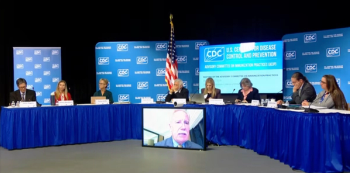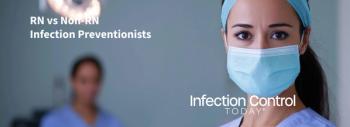
IDWeek 2025: School Infection Prevention Insights From Nebraska
What do schools need to prevent the spread of infectious diseases? Infection prevention experts and school staff in Nebraska present their collaboration at IDWeek2025.
Schools are high-contact environments with limited on-site expertise in infection prevention. During COVID-19, Nebraska’s Infection Control Assessment and Promotion Program (ICAP), the Nebraska DHHS HAI/AR Program, Children’s Nebraska, and UNMC stood up a suite of K–12 resources—newsletters, a statewide conference, online CE, and the Nebraska Infection Control in Education (NICE) Book. To steer what comes next, the team asked school health personnel what they still need most.
How the Assessment Worked
From September to October 2024, the group distributed a short REDCap learning-needs assessment (LNA) via school-nurse listservs, social media, and the NE-ICAP website. Eligible respondents (Nebraska-based school nurses, health paraprofessionals, or administrators with health duties) completed 10 items covering resource use, preferred topics, language needs, and priority training areas. Quantitative data were summarized descriptively; open-ended comments underwent thematic review by subject-matter experts.
What school staff told them
- Responses: 88 started; 79 met inclusion criteria for analysis.
- Most used tool: The NICE Book—70% had used it in the prior 12 months.
- Language access:Spanish was the most requested language for translation (78%), indicating a need to match materials to students' and families' language profiles.
Highest-priority content to add to the NICE Book:
- Immunization documentation and regulations (32%)—requirements, exemptions, and guidance for students arriving from outside the U.S.
- Hygiene and safety supplies (18%)—what to stock, how to source, and when to replace.
- Newsletter interests:infectious diseases and common illnesses (54%) (seasonal respiratory viruses, GI outbreaks, rashes) followed by general IPC topics (41%).
- Top training gaps:outbreak management (54%)—including threshold setting, notification, and line lists—and airborne transmission prevention (44%), reflecting ongoing questions about ventilation, masking, and room management.
Implications for IPC Programs
The needs profile is strikingly practical. School health teams want actionable checklists, templates, and algorithms, not just background reading. They also want materials they can hand to families in Spanish, and concise playbooks they can open the moment an attendance clerk flags an unusual spike.
Recommendations the Poster Advances
- Build and translate (Spanish first) a standardized immunization documentation toolkit: requirement/exemption summaries, FAQs, newcomer guidance, and parent letters.
- Publish a supplies guide (age-appropriate masks, hand rub specs, cleaning products, HEPA units, replacement schedules, vendor tips).
- Create a school outbreak playbook (respiratory, GI, skin conditions) with case definitions, thresholds to notify public health, line-list templates, isolation/return criteria, and sample communications.
- Expand training on airborne risk reduction: ventilation basics, portable HEPA selection and placement, cohorting, and event-based masking policies.
- Continue multimodal education—short videos, one-page job aids, QR-linked posters, and office hours—to fit school schedules.
- Track implementation metrics (resource downloads, training completion, time-to-notification, absenteeism trends) to tie education to outcomes.
Bottom line
Nebraska’s school health staff are using the NICE Book and want more, especially clear immunization guidance, outbreak playbooks, airborne-prevention tactics, and Spanish translations. Meeting those needs with concise, practical, and culturally accessible tools will strengthen day-to-day infection control and improve readiness for the next surge.
Authors: Juan M. Teran Plasencia, MD (assistant professor, Division of Infectious Diseases, University of Nebraska Medical Center – UNMC; presenting author); Christina Cashatt, RN, BSN, CIC (infection preventionist, Nebraska ICAP); Mounica Soma, MHA, MSPM (database analyst, Nebraska Medicine); M. Salman Ashraf, MBBS (associate professor, Division of Infectious Diseases, UNMC); Laura Kate K. Tyner, BSN, RN, CIC (infection prevention supervisor, Nebraska Medicine); Alice I. Sato, MD, PhD (UNMC; Children’s Nebraska); Robin M. Williams, MPH (epidemiology unit administrator, Nebraska DHHS); Andrea M. Riley, BSN, BA, RN (Children’s Nebraska).
Newsletter
Stay prepared and protected with Infection Control Today's newsletter, delivering essential updates, best practices, and expert insights for infection preventionists.






